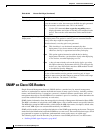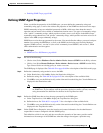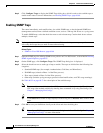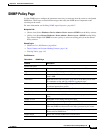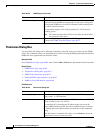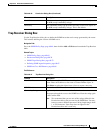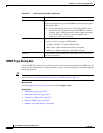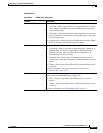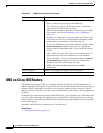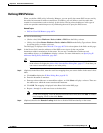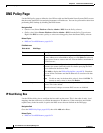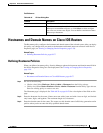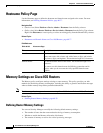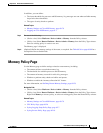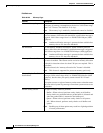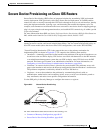
60-74
User Guide for Cisco Security Manager 4.4
OL-28826-01
Chapter 60 Router Device Administration
DNS on Cisco IOS Routers
DNS on Cisco IOS Routers
The Domain Name System (DNS) is a distributed database in which you can map hostnames to IP
addresses through the DNS protocol from a DNS server. Each unique IP address can have an associated
hostname. DNS is what makes it possible to connect to hosts without having to know the 32-bit IP
address of that host. The DNS server takes the provided hostname and translates it into the appropriate
IP address.
In addition to the translation provided by remote DNS servers, you can configure Cisco IOS routers with
a local host table containing static mappings of hosts to IP addresses. When commands such as connect,
telnet, and ping are used, the router checks this host table before querying the DNS servers, which speeds
the translation process.
By default, the DNS feature is enabled on all Cisco IOS routers.
Related Topics
• Defining DNS Policies, page 60-75
Other Traps Enables or disables additional SNMP traps. Options are:
• Syslog—Sends syslog messages to the SNMP host.
• TTY—Sends Cisco-specific notifications when a Transmission
Control Protocol (TCP) connection closes.
• BGP—Sends notifications when Border Gateway Protocol (BGP)
state changes occur. See BGP Routing on Cisco IOS Routers,
page 64-1.
• IP Multicast—(Applicable to multicast routers only) Sends a trap
if the router fails to receive a defined number of heartbeat packets
from heartbeat sources within a defined time interval.
If you select IP Multicast, you must also manually configure the ip
multicast heartbeat command on the device to configure the
multicast address and heartbeat limits. You can use FlexConfigs to
do this.
• CPU—Sends a trap when CPU usage rises and remains above an
upper threshold or falls and remains below a lower threshold.
If you select CPU, you must also manually configure the process
cpu threshold type command on the device to configure the
thresholds. You can use FlexConfigs to do this.
• HSRP—Sends Hot Standby Routing Protocol (HSRP)
notifications.
Select All button Enables all the SNMP traps displayed in the dialog box.
Deselect All button Disables all the SNMP traps displayed in the dialog box.
Table 60-32 SNMP Traps Dialog Box (Continued)
Element Description



